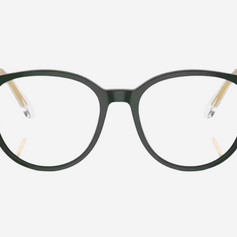Just like we need to eat healthy to keep our body healthy, we need to blink to keep our eyes healthy. When we blink, a fresh layer of tears spreads across the eye keeping it moist. Any dust particles or irritants are also brushed away through blinking.
Poor blinking habits can create many symptoms of dry eyes. Due to the drying of eyes, the front surface of cornea becomes foggy, tear film is not produced and due to this our vision suffers. This kind of situation can create mild symptoms of burning and photophobia. It can also create minor discomfort and an uncomfortable feeling when wearing a contact lens.
Normal blinking rate varies from 15-18 blinks per minute and each blink lasts for 0.3 - 0.4 seconds. This rate is higher for men than for women and is also increased during emotional situations. The average period between blinks is about 2.8 seconds in men and just under 4 seconds in women. Spontaneous or voluntary blinking does not produce a discontinuity of vision in spite of the fact that vision is interrupted during the blink.
Blinking rate gets affected and the rate may go down by 60% if you are tired or you are a poor blinker. Blinking rate is affected if you are reading, driving, watching computer screens, for a long period of time during your work.
There are also some conditions that affect the rate of blinking, like thyroid disorder, stroke, facial palsy, Parkinson’s disease. Antidepressants also affect the rate of blinking.
If you wear contact lenses, blinking properly is a very important factor in successful wearing of contact lenses. There is an interchange of tears between contact lenses and the cornea that happens with blinking, through which the cornea receives fresh oxygen and nutrients. When you blink, your eyelid closes and it acts like a windshield wiper and sweeps the tears over the cornea. When you wear contact lens and blink, the lids move the lens and a new tear film is produced which interchanges with the existing tear film.
Poor or incorrect blinking can also cause corneal edema or swelling of eyes, because it gets deprived of oxygen and tear film is not produced as much as needed.















